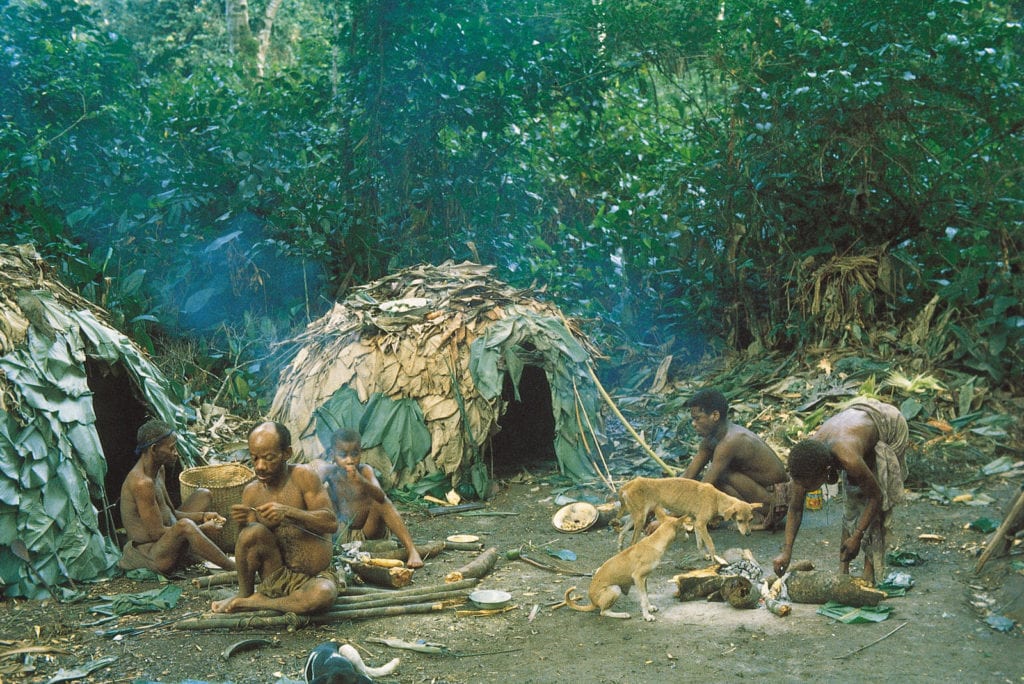Most Africans today are now adherents of either Islam or Christianity. However, long before the Europeans and Arabs stormed the shores of Africa to colonize the region, many African gods and goddesses, as well as mythological deities, dictated the religious realities of the people on the continent. In that era, traditional practices like worshiping different local African gods and deities formed the core tenets of religion among the various ethnic groups scattered across the region.
Since time immemorial, Africans, just like people from other continents, have always believed in the existence of supernatural powers and have always held their deities in very high esteem. They believed that life was not complete without a link of communication between mere mortals and the higher powers. For many Africans, the concept of religion included nature worship, worship of tutelary deities, ancestor worship, and the belief in an afterlife.
Why African Gods and Goddesses Were Important Parts Of The African Culture
Africa is a very large continent with so many different kinds of people in it. These different people, divided into various ethnic groups, all have different beliefs and traditions that guide their actions and daily lives. In fact, according to a 2020 report, there are over 3,000 different ethnic groups around the African continent speaking more than 2,100 different languages and who all have their own history and story. With their varying beliefs and traditions, these various ethnic groups all have a peculiar and truly fascinating array of folklore and tales of wonder that are centered around mythological figures, gods, and deities that have become a core part of their lives and cultures. In ancient times, the worship of African gods and goddesses held a gripping influence over everyone living within the areas of their authority.
Importantly, the worship of African gods and deities kept ethnic groups together and ensured that order was intact. Local Africans feared their deities and adhered strictly to laid down rules to avoid being struck with an ailment or even worse. Also, people went to their gods to seek solutions to their many problems, including issues of childbirth and danger to human life. Usually, sacrifices are performed for these solutions to be proffered by the gods. People also depended on the gods for certain healing to ailments that ordinary medicine could not cure.
Also, people got justice with the help of their gods. Anyone who had been hurt by another person or whose rights had been trampled often ran to the gods to seek justice. Criminals like murderers and thieves met their doom and waterloo when their cases had been handed over to the gods. It was clear that ancient African societies had their justice system firmly in not just the control of their chiefs and but also in control of their deities. These African gods and deities also brought people together for celebrations as festivities were often held in the worship of the gods and goddesses every year.
In the various African religions, dead relatives are believed to be still alive somewhere in the spirit world where they are watching over those who are still alive. It is also noteworthy that there are several gods co-existing in different African societies because many ancient traditional African religions were strictly polytheistic. This means that most societies believed in and worshiped multiple deities and not just one supreme being.
What Is The Place Of African Gods and Goddesses In Contemporary Times?
Like we have mentioned already, with the invasion of the Europeans and Arabs into Africa, the popularity of African gods and goddesses waned considerably as they were overtaken by the Islamic and Christian religions. However, even today, with the popularity of the Christian and Muslim faiths, many Africans have continued to combine the practice of their traditional beliefs with either their Islamic or Christian religions.
Traditional African religions and the worship of African gods and goddesses have not completely been discarded. Their practices have been kept alive by the preservation of traditional African institutions like traditional monarchical systems. Traditional rulers still exist all over Africa and even though they no more have formal political power, they still command immense respect from their people and have considerable influence. Traditional rulers are seen as the mouthpieces of the gods and their words hold power. They carry out occasional rituals to cleanse the communities and hold festivals to celebrate the gods. African gods and deities may not be as popular as they were in ancient times, but they still command attention in contemporary times.
Today, different traditional healers and practitioners who are known in Nigeria as native doctors and are known as Sangomas in South Africa still continue to provide local solutions to people seeking help from African gods and goddesses. Also, many people who feel they cannot get justice from the established judicial system, resort to seeking justice from the gods. Some of these people feel karma is more swift and justice is faster if meted out by the African gods with the proper sacrifice.
List Of African Gods, Goddesses, and Mythological Deities
1. Nana-Buluku

Nana-Buluku is a highly venerated goddess who is considered to be the female supreme among some West African cultures. She is particularly worshiped in the traditional religion of the Fon people in Dahomey, now Benin Republic, and the Ewe people of Togo. The goddess, who is also known as Nana Buruku, Nana Buku, or Nanan-bouclou, is widely regarded to be one of the most influential deities in West African theology and is held in high esteem among many cultures.
As a matter of fact, Nana-Buluku is recognized and worshiped by different ethnic groups other than just the Fon and Ewe people; she is also worshiped by the Yoruba people in Nigeria who call her Nana Bukuu. The Igbo people in Nigeria, who also revere and worship her, call her the Olisabuluwa. Some people actively worship Nana-Buluku, however, others do not worship her directly but worship the gods that originated from her.
Nana-Buluku originated among the ancient Dahomey people. In Dahomey mythology, the goddess is regarded as the mother supreme creator who gave birth to Mawu, the moon spirit, Lisa, the sun spirit, and all of the universe. According to the mythology, when Nana-Buluku had given birth to these spirits, she decided to retire from creation and then left the matters of the world to Mawu-Lisa. Therefore, she is the primary creator while Mawu-Lisa is the secondary creator.
Among the Fon people, the worship of Nana-Buluku and the Mawu-Lisa is still observed today. It is believed that appeasing the gods can change one’s destiny and offerings are offered in that regard.
2. Takhar
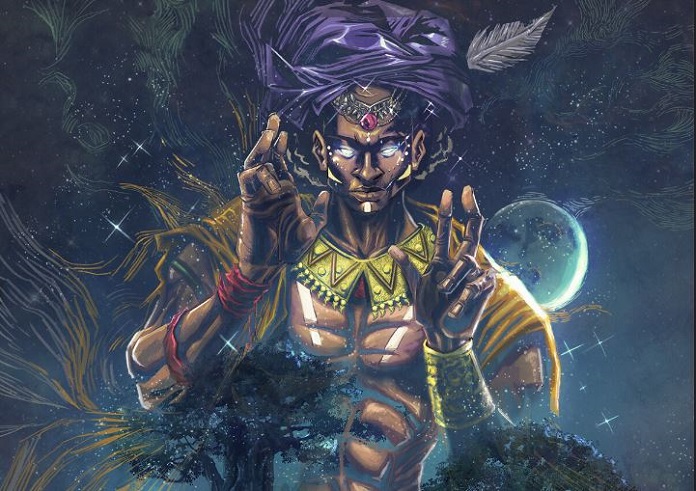
Takhar is a demi-god who is highly revered in the Serer religion which is practiced by people from the Serer ethnic group, a West African ethnoreligious group found in Senegal, the Gambia, and Mauritania today. The Serer people diligently worship Takhar who is also known as Taahkarr.
In the Serer religion, Takhar is viewed as the god of justice and vengeance and his worshipers worship him so as to appeal to him to prevent oppression, evil magic, or injuries that may be inflicted by other people on them. Usually, the god is worshiped by his faithful at the foot of trees deemed to be sacred. He is also worshiped in the new moon. Takhar, as the god of justice, is regarded to be the perpetual patron of all those who work within the judiciary.
The Serer people believe that their god, Takhar, lives in the tallest trees of the forest. This is why Takhar is worshiped in the forests especially at certain sacred places like the Sine-Saloum area of Senegal. Worshipers kill cattle and poultry as sacrifices and then take the sacrifice to a sacred sanctuary in the forest where the holy feast takes place. Takhar is represented by certain high priests who are usually very old men from notable Serer families. The worship of Takhar is still very active today in Senegal.
3. Anubis

Anubis is an ancient Egyptian god who was one of the most revered deities in the ancient Egyptian religion. Also known as Inpu or Anpu, the god Anubis is revered as the god of death, the afterlife, mummification, cemeteries, embalming, tombs, and the underworld. The god is usually depicted as a canine or a man with a canine head in ancient Egyptian religion. Because of this, the god Anubis is sometimes referred to as having a “jackal” head or a “wolf” head. The wolf head is now what it is now more properly referred to have.
Anubis is known to have assumed different roles in ancient times. As early as the First Dynasty of Egyptian Kings, which is between 3100 – 2890 BC, the god was depicted as a protector of graves. Later, he was also depicted as also an embalmer who tended to the dead. He was also known as the lord of the underworld. Anubis is one of the most frequently depicted and mentioned gods in the Egyptian pantheon.
However, one of Anubis’ most prominent depictions was as the god who ushered the souls of dead people from the world of the living into the afterlife. He was the one who also determined the fate of the dead people; he decided if they suffered or if they enjoyed in the afterlife. He did this by what is known as the ‘Weighing of the Heart’. Anubis, after guiding the souls of dead people into the afterlife, would weigh their hearts on the scale of ‘truth’ and if the weight was right, the soul of the person being weighed would be admitted to a heavenly existence. However, if the heart of the deceased failed to weigh right, the person would be condemned to be devoured by Ammit, a demoness.
In contemporary times, the worship of Anubis and other ancient Egyptian gods has diminished greatly in Egypt as more than 90% of people there now practice Islam, and another 9% practice Christianity.
4. Adroa
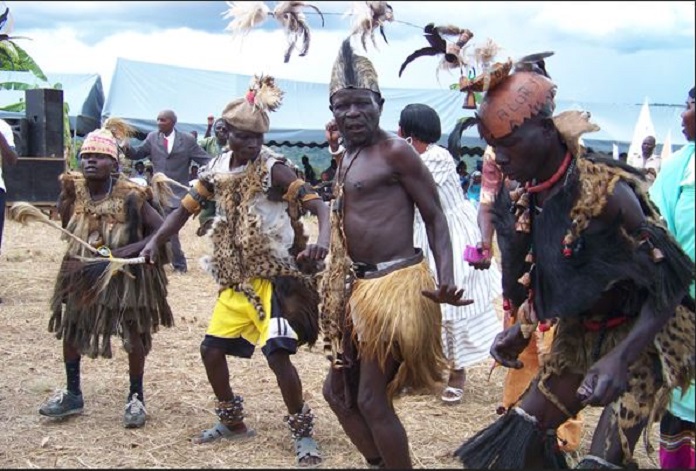
A highly revered deity, Adroa is the supreme god of the Lugbara people – a Central Sudanic ethnic group who now majorly live in the West Nile region of Uganda which is in the adjoining area of the Democratic Republic of the Congo. In the Lugbara religion, Adroa is a creator god. This creator aspect of him was known as Adroa ‘ba o’bapiri (‘God the creator of men’).
According to the Lugbara people, Adroa is the one who created the first man on earth whose name is Gborogboro. He also created the first living woman called Meme. The Lugbara religion explains that Gborogboro and Meme were also twins who went on to become the ancestors of the Lugbara people. This means that the Lugbara people were the first inhabitants of the earth. After creating the first man and woman, Gborogboro and Meme, Adroa established social order on earth by communicating his laws to the tribal ancestors of the Lugbara people.
Interestingly, Adroa is said to have two aspects to him. These two aspects are Adroa the good (onyiru), and Adroa the bad (onzi). Adroa the good is, according to the Lugbara, far-removed from mankind and is transcendent while Adro the bad is earthly, living among mankind on earth especially in rivers. He is also associated with death because he is believed to appear to those who are close to death.
The worship of Adroa is still in practice today among the Lugbara people who believe that the god is the creator of all things.
5. Njambe
Njambe is a highly revered god among the Boloki people, also known as the Loki people. In the traditional religion of the Loki or Boloki people, Njambe is the supreme creator god figure who controls everything. Take note that the Boloki people are an ethnic group that is primarily based in the Democratic Republic of Congo today.
Njambe is prominent in Boloki myths regarding the origin of death. This, according to anthropologist John H. Weeks, is because Njambe is also used to refer to a deity associated with sickness and death. It is noteworthy that the name Njambe is also used to identify the supreme creator figure by the Kuba people of the Democratic Republic of Congo.
Today, the worship of Njambe, as the supreme god who controls all things, is still practiced by the Boloki people.
6. Nhialic

Nhialic is the supreme creator god of the Dinka people, a Nilotic ethnic group native to South Sudan. According to Dinka mythology, Nhialic, as the supreme god, lives in the skies and is regarded to be a male although he is not known to have physical manifestations. According to some accounts, the god is also referred to as Deng Dit.
As per the Dinka mythology, the Dinka people believe that their god, Nhialic, was the one who created the first man called Garang and the first woman called Abuka. Nhialic created them from clay and at first, both Garang and Abuk were very little in size as they were just a miniaturized form of present-day humans. However, Nhialic decided to make them bigger by putting them in pots and leaving them inside for a while. By the time they finally emerged, they were as big as the present-day fully-grown humans.
The god, Nhialic, is also said to have created the universe and everything that now exists inside it. The Dinka people revere Nhialic so much and different natural phenomena that form in the sky, including phenomena like thunder and rain, are regarded as a clear sign of the god’s unmistakable presence on earth. Also, many of the other gods and goddesses of the Dinka people such as Ayum, goddess of the wind, Alwet, goddess of the rain, Aja, Nyanngol, and others are actually Nhialic’s offspring. Among the Dinka people, the god, Nhialic is still being worshiped today.
7. Mebege

Mebege is the most revered god among the Fang people of the Central African Republic. In fact, he is regarded as the supreme creator god who made all things at the beginning of time. According to Fang mythology, Mebege was originally alone in the whole universe with only a spider called Dibobia to keep him company. They were alone for a long time. However, after some time, Dibobia suggested to Mebege that he should create the earth and other things to join them.
Upon this suggestion, Mebege decided to create other deities. Mebege took out several strands of his hair, removed a part of his brain, and a smooth stone. He then turned them into an egg and gave it to Dibobia. Dibobia took the egg and put it inside the sea, leaving it there for some time. After a while, the egg inside the sea cracked open and three deities emerged from it. The deities included the firstborn called Zame ye Mebege, the second-born, Nyingwan Mebege who was a female, and the youngest, Nlona Mebege, a male.
Zame ye Mebege became the leader of the other deities and is associated with masculine energy and the sun while Nyingwan Mebege, his sister, was associated with fertility, feminine energy, and the moon. On his own part, the youngest deity, Nlona Mebege, was associated with evil. According to Fang mythology, after Mebege had created the deities, he gave the leader, Zame ye Mebege, all the instructions he needed on how to create the earth. As soon as Zame had succeeded in the creation, Mebege and Dibobia left him in charge of the earth, and they both ascended to the heavens. In the present day, the Fang people of Central African Republic still pay obeisance to Mebege.
8. Amadioha
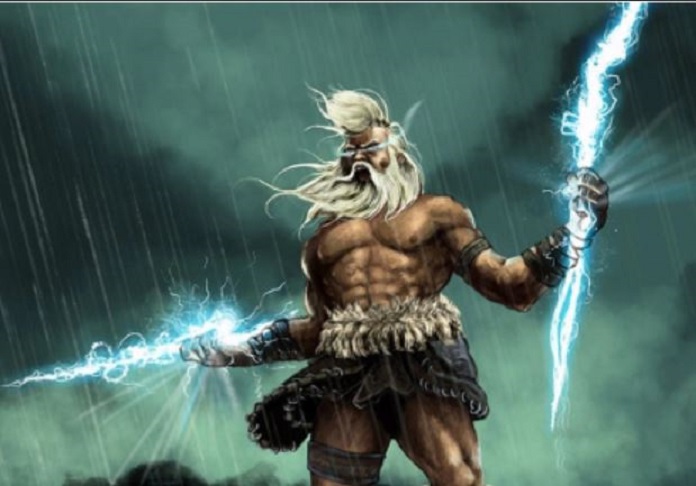
Amadioha is one of the most popular and powerful deities among the Igbo people of southeastern Nigeria. He is also one of the most popular African gods today. It is noteworthy that, in some parts of Igboland, the god is also referred to as Amadiora, Kamanu, Kamalu (which is short for Kalu Akanu), or Ofufe.
Amadioha is feared as the god of thunder and lightning of the Igbo people. The symbol of Amadioha is a white ram and his color is red. Also, astrologically, the god’s governing planet is the Sun. In some Igbo traditions, Amadioha is regarded to be a creator god. According to this mythology, Amadioha created human beings when he sent a bolt of lightning from the skies down to earth. The bolt of lightning struck a silk cotton tree and the tree split, revealing the first man and a woman.
Amadioha is also regarded as the god of justice. This means he is the one people run to when they seek justice. Anyone who is is judged guilty as charged by the god is either struck dead by lightning or attacked by a swarm of bees. If the person is killed by lightning, the lightning often leaves a black mark on the forehead. Because he is the god of thunder, Amadioha is known to speak through thunder, and also strikes out in vengeance with lightning. According to Igbo mythology, Amadioha creates his thunder and lightning by throwing “thunderstones” from the skies to the earth.
Amadioha, apart from being the god of justice, is also loved as the god of peace, unity, and love. Because of this, people prayed to him for an increase in crops and many others prayed to have children. In fact, for many people, Amadioha represented a messianic hope for those in critical situations.
In contemporary times, the worship of Amadioha has waned as most Igbos have accepted and embraced Christianity. However, many shrines of Amadioha still exist today in different parts of Igboland. These shrines are occupied by traditional priests who are often visited by people seeking help. The main shrine of Amadioha is currently located at a place called Ogboro Ama Ukwu or Ihiokpu in Ozuzu in Etche Local Government Area of Rivers State.
9. Mami Wata
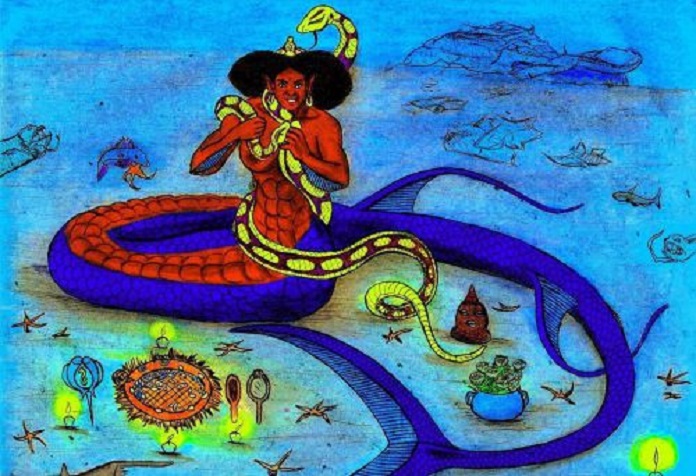
Mami Wata is a water deity or spirit that is highly venerated in West Africa as well as in parts of Central, and Southern Africa. Also known as Mammy Water, the Mami Wata spirits are most frequently depicted as females, however, they are also sometimes male. Some scholars have claimed that the term “Mami Wata” is actually a pidgin English derivation of the term “Mother Water” meaning that the goddess’ title is actually “mother of water” or “the grandmother of water”. Often, the goddess Mami Wata is depicted to have the figure of a mermaid; that is a woman’s upper body and the hindquarters of a fish or serpent. The spirit is also said to love passing as a complete human being sometimes and then wander through busy markets or patronizing bars, to mingle with unsuspecting humans. At other times, she can also manifest herself in a number of other forms, including that of a man.
The worship of Mami Wata is very diverse as her followers interact with her in different forms. Many faithful sometimes gather to chant incantations and sing in her name, however, Mami Wata is said to be much more used to getting in contact with followers on a one-on-one basis. Sometimes, during her worship, Mami Wata worshipers engage in very intense dancing. The dancing is so intense that sometimes the followers go into a trance and then the goddess possesses the person and speaks to them.
Mami Wata is connected to healing as many followers believe she has the power to cure ailments. Others also believe she can cure infertility. As a matter of fact, many barren mothers often call upon the spirit to cure their affliction. The Mami Wata has shrines that are usually decorated in red and white clothing because the colors represent the spirit’s dual nature. Offerings are usually taken to these shrines. In Nigerian tradition, Mami Wata often appears to her male followers in the form of a beautiful and sexually promiscuous woman. She will then seduce the man into sleeping with her and then reveal herself to him afterward. She will then demand that he remains completely faithful to her sexually. If he agrees, the man will become wealthy, however, if he disagrees, he will suffer ruin in his finances, family, and job.
10. Ngai
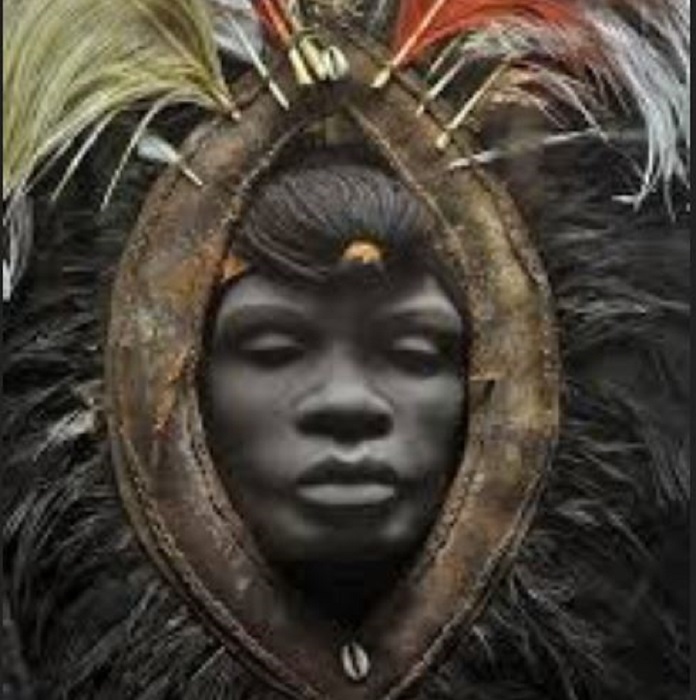
One of the highly revered African gods, Ngai, is the Supreme God of the Kamba and Kikuyu ethnic groups of Kenya. Regarded as the omnipotent God, Ngai who is also known as Engai, Enkai, Mweai, or Mwiai, is known in the spirituality of the Kamba and Kikuyu people as the creator god of the entire universe and all of the things that are in it. According to the Kamba and Kikuyu people, Ngai created the very first human beings. The first man that he created was called Gikuyu and the first woman was called Mumbi.
The Kikuyu ethnic group often worshiped the god with their faces set on Mt. Kirinyaga (Mount Kenya). Also, goats are sacrificed as rituals, and prayers are offered under the sacred Mugumo tree (a fig tree species). Sacrifices are usually performed on occasions when people are faced with very serious problems like epidemics and drought. They are also performed during planting and harvesting and also during birth and marriage and even death.
The worship of Ngai is still very much in practice today among the Kamba and Kikuyu ethnic groups of Kenya.
11. Arebati
Arebati is the most revered deity among the Efé people of the Democratic Republic of the Congo. In fact, he is regarded to be the god of creation or supreme god in the mythology of the Efé people. He created all things and the world as they know it. It is noteworthy that the god Arebati is also worshiped by the Mbuti people of the Congo, however, they worship him under a different name, which is Baatsi.
The Efé people believe that Arebati, as the creator of all things, created the first man from clay with the help of the Moon. In Efé mythology, the first human beings to be created were actually immortal. This is because when they grew old, the god Arebati usually returned them to being young again, and then they would continue living from scratch.
However, a woman died one day under Arebati’s watch and the god decided to bring her back to life. He then asked a frog for help in moving the woman’s dead body to the side of the road but a toad appeared and asked that he should be let to do the task in place of the frog. Arebati then warned the toad that if the toad allowed itself and the woman’s body to fall inside the pit, something really bad will befall them. Unfortunately, the toad failed to carry out the task and both he and the woman’s body fell inside the pit. Some say this was because the toad was clumsy. In any case, because they fell into the pit, the rest of humanity was condemned to have the same experience, which is to die permanently and be buried in a grave.
Today, the Efé people still worship Arebati as many depend on him for blessings in everyday life.
12. Roog
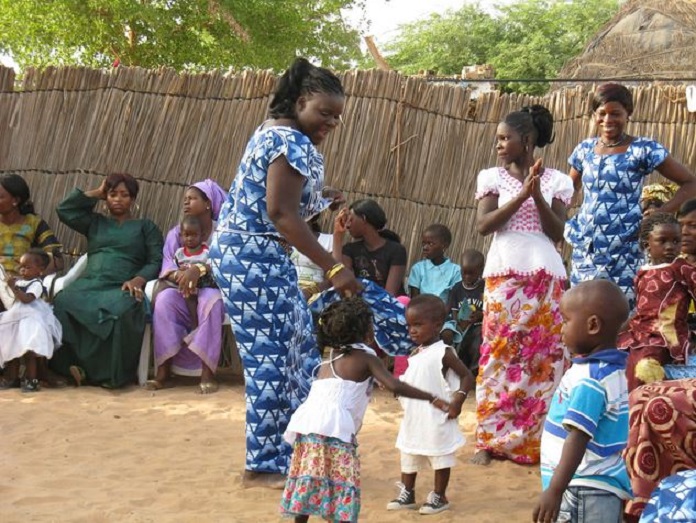
Roog is the most revered deity among the Serer people of Senegal in West Africa. In fact, the god, who is also also known as Rog, is regarded as the Supreme God and creator of the Serer religion which is popular in the Senegambia region. The Serer people believe that Roog is an incorporeal and hermaphroditic being because the god possesses both a male and female nature. So, when some people pray to Roog during their consecration rituals, they refer to Roog as “mother and father.”
In the Serer religion, Roog is regarded as the source of life because everything that exists and ever was, returns to Roog at the end of time. He is also the creator of all the other gods of the Serer people. For the Serer people, Roog is considered to be the origin and the end of all things.
Usually, when the practitioners of the Serer traditional religion pray to Roog, they do not really directly reach out to Roog, instead, they often pray to Roog through ancestral spirits known as pangool. Because of this, Roog does not have any place of worship. In modern times, the Serer people still actively worship Roog.
13. Ṣàngó
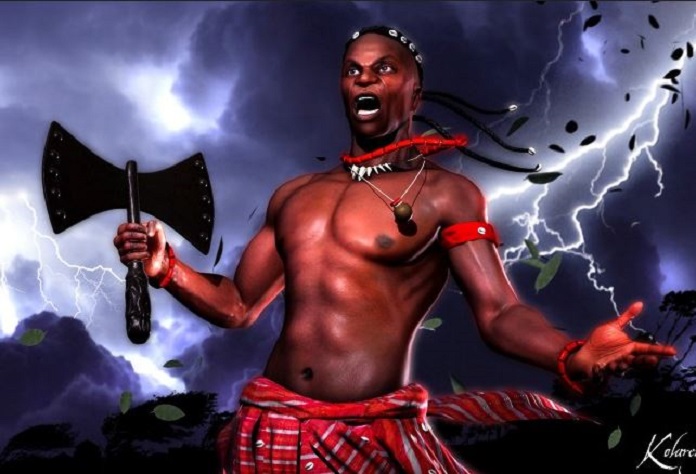
Highly revered, Ṣàngó is one of the most feared African gods. He is one of the most popular deities among the Yoruba in Nigeria, West Africa. Also known as Shango, Changó, or Xangô in Latin America, Ṣàngó is a royal ancestor of the Yoruba people. It is said that the deity was the third Alaafin of the Oyo Kingdom before his posthumous deification, and is widely considered to be one of the most powerful rulers that Yorubaland has ever produced. He is the god of thunder, lightning, and justice.
Ṣàngó is greatly feared among the Yoruba people. In fact, he is viewed as one of the most powerful and dreaded of all the gods in the Yoruba religion. In Yoruba religion, Ṣàngó is believed to create thunder and lightning on earth by casting a “thunderstone” to earth. He attacks anyone who offends him with the thunder that he casts on earth. His worshipers fear him so much that they do not eat cowpea because they believe that the anger of the god would descend on them.
All rocks that are found to have been created by lightning strikes are immediately venerated by Ṣàngó worshipers. In fact, whenever these stones are found, they are carefully preserved and maintained at sacred sites to be used in rituals. Even in modern times, the god is still worshiped among the Yoruba people. He is often called on during coronation ceremonies in Nigeria to the present day.
14. Qamata
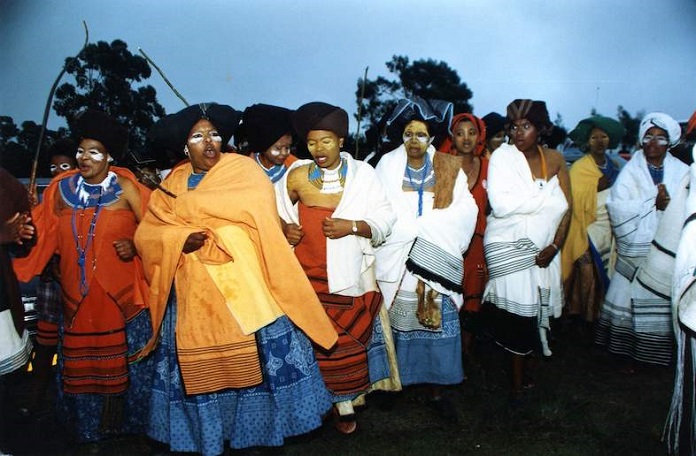
Qamata is the most popular deity among the Xhosa people of south-eastern Africa. The god is omnipresent and is known to be the creator god in the Xhosa religion. Credo Mutwa, a Zulu sangoma and writer once recited a mythical legend of how Qamata created dry land. The legend states that when Qamata made the moves to create land, Inkanyamba, the sea dragon interfered to stop him, however, Qamata’s mother, uJobela, quickly created four giants to help him in the work and also fight Inkanyamba.
When Qamata was eventually done creating land, uJobela turned the giants to stone so that they would be able to continue watching over the land. According to the Xhosa people, these stones are still seen today. According to the legend, the southernmost of the stones called Umlindi Wemingizimu (“Watcher of the South”) became Huri, the Table Mountain in Cape Town, South Africa.
To worship Qamata, followers often scatter small artificial heaps of stones or cairns about the land as a sign of reverence. Worshipers pay reverence to Qamata to be granted luck or good fortune. The worship of Qamata is still very much in practice among the Xhosa people.
15. Ọbatala
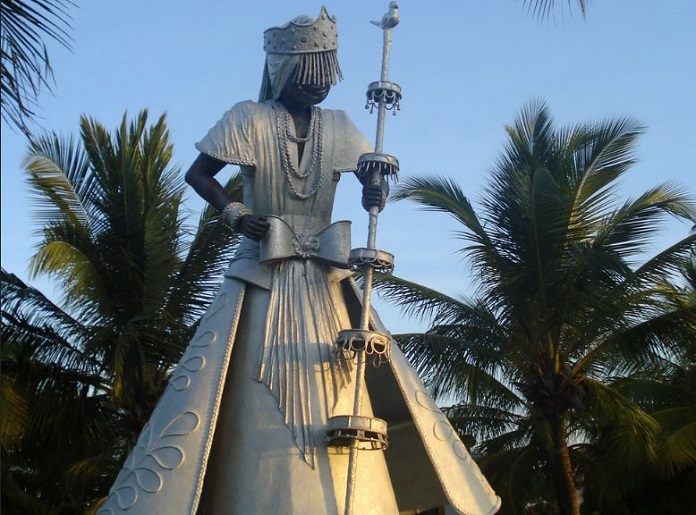
Ọbatala is one of the very popular African gods today. He is a highly revered deity of the Yoruba people in Southeastern Nigeria. Also known as Oshala, the god is regarded to be the father of other deities and spirits. In the Yoruba religion, Ọbatala is the creator of human bodies. The bodies that he created were brought to life by the smooth breath of Olodumare, the Supreme Creator God. Ọbatala is said to be the Sky Father according to the Yoruba people and has a principal wife called Yemaya.
In Yoruba mythology, Ọbatala created land upon the water beneath the sky after he was authorized by Oludumare to do so. Because of these efforts, Ife, the first Yoruba city, was founded. Yoruba oral traditions say that Ọbatala, in a mortal form, served as king of Ife during its classical period before being deified.
Animal offerings are usually offered for Ọbatala and these offerings often consist of a snake, white hen, goat, pigeon, slugs, guinea, or snails. However, all other kinds of offerings that include alcohol, crab, or beans are not allowed. Interestingly, the offerings that are made to Ọbatala must also be bland and not consist of any spices and they must also be made on clean white cloth. In the modern-day, the worship of Ọbatala is still practiced among the Yoruba people.
Which Of The African Gods Is The Most Powerful?
This is a question that has been asked by many people over the years. However, it is important to know that it is quite impossible to label any of the African gods or goddesses as the most powerful of all the rest. This is because of the vast differences in their roles and their places in their respective cultures and ethnic groups where they are worshiped and held with the greatest regard.
Like we have laid bare above, there are many African gods, goddesses, and mythological figures today. Spread over all the continent, thousands of ethnic groups are in existence and they all have their own individual religions complete with their gods, mythological figures, and set of religious rules and regulations to follow as well as rituals to carry out. Because of the very diverse roles that these gods are known to play, they are all reverenced and held in high regard by their followers.
It is noteworthy that some of the deities are more feared than others. In Nigeria, deities like Ṣàngó and Amadioha are greatly feared because of the instant and fearsome punishment they mete out to followers who disobey them. But other deities like Obatala, Roog, Nana-Buluku, and others are more regarded fondly as the gentler deities. However, the ferocity of Ṣàngó and Amadioha does not make them greater than other gods especially because they all have very specific roles that they have to carry out. This is why in ancient African societies, different gods exist side by side with each known for a different attribute that complements those of other gods.
Also, take note that, in specific cultures, some gods are greater than others. For instance, among the Fang people of the Central African Republic, Mebege is the most important or supreme god who created the other deities. However, when put against all the other African cultures and deities in existence, Mebege can only be regarded as a powerful god among other powerful gods in Africa. We can agree that the different African gods and goddesses are all-powerful in their own rights and draw their followers to themselves with their uniqueness and the power that they command.
